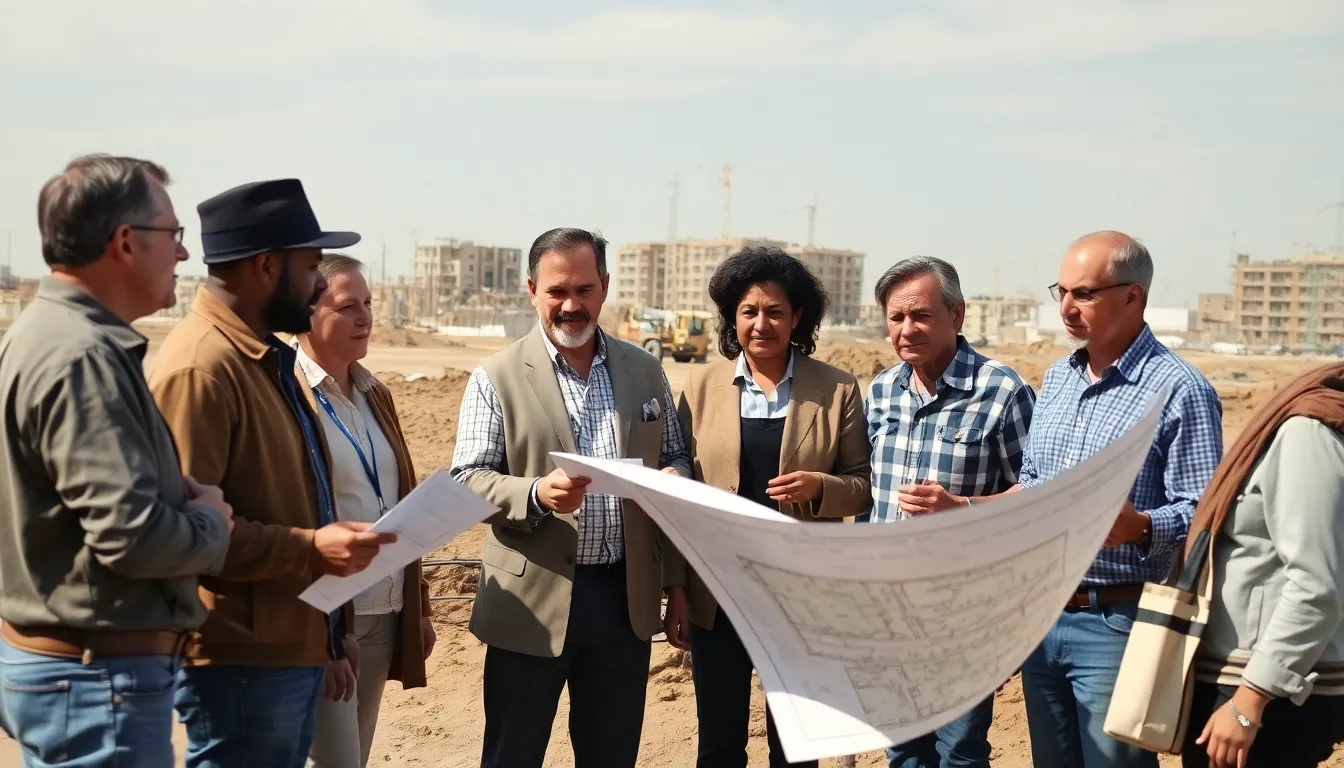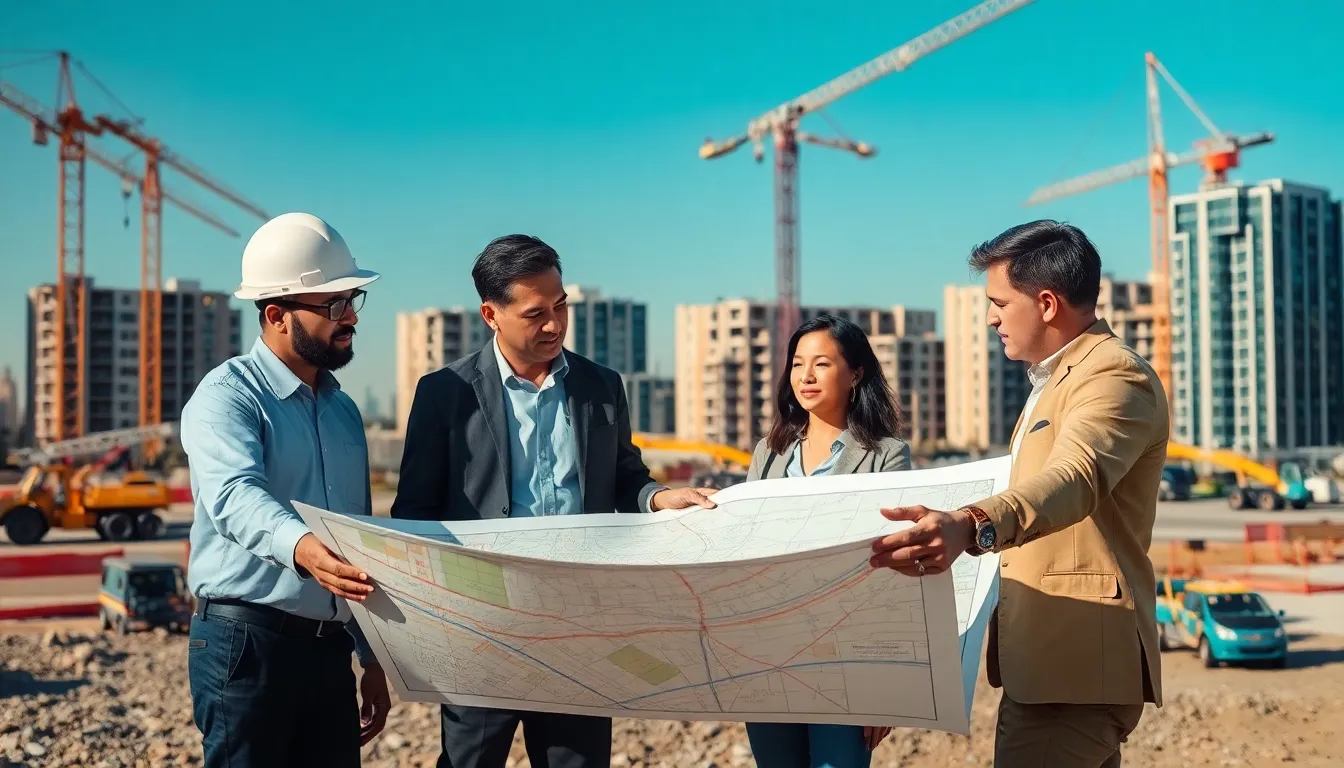In a world where land is as precious as gold, real estate land development stands out as the treasure map guiding investors and dreamers alike. Whether it’s transforming a barren lot into a bustling community or turning a patch of dirt into a swanky shopping center, the potential is limitless. Who wouldn’t want to be the mastermind behind the next big neighborhood or the hottest new hotspot?
Table of Contents
ToggleOverview of Real Estate Land Development
Real estate land development involves transforming raw land into usable spaces. This process includes various activities such as zoning, planning, and construction. Land development plays a crucial role in accommodating population growth and urbanization trends.
Developers assess the land’s potential value and determine the best-use scenarios. By conducting market analysis, they identify demand for residential, commercial, or mixed-use projects. An analysis of local regulations often affects development decisions significantly.
Effective land development includes various stages, like site acquisition, environmental assessment, and securing necessary permits. Investors rely on accurate planning to minimize risks and maximize returns. Community engagement remains essential throughout development projects to ensure alignment with local needs and preferences.
Market demand influences the type of developments pursued by investors. Residential developments often target housing shortages, while commercial projects focus on retail or office spaces. Facilities like parks or community centers may enhance appeal and overall value.
Successful land development contributes to economic growth by creating job opportunities and increasing property values. New developments stimulate local economies and encourage further investments. A well-executed project retains the potential to become a landmark in the community, enriching the local landscape.
Regulatory compliance affects timelines and budgets significantly. Understanding these aspects is critical for developers aiming for success. The overall impact of real estate land development extends beyond individual projects, shaping urban environments and lifestyles for residents.
Key Concepts in Land Development

Understanding key concepts in land development is essential for navigating the complexities of transforming raw land into viable projects. Zoning regulations and site selection criteria play significant roles in this process.
Zoning Regulations
Zoning regulations dictate how land can be used within specific areas. Municipalities enforce these laws to control urban growth, maintain safety, and ensure community well-being. These regulations define types of developments permitted, including residential, commercial, and industrial uses. Changes to zoning can involve applications for variances or re-zoning, which might be influenced by community feedback and local planning departments. Developers must thoroughly examine zoning regulations prior to any project to avoid complications. Compliance with these rules affects timelines and project feasibility.
Site Selection Criteria
Site selection criteria determine the ideal location for land development. Key factors include accessibility, infrastructure availability, and proximity to amenities. Evaluating demographic data reveals market demand, guiding developers toward suitable projects. Environmental considerations, such as flood zones and soil quality, also impact site selection. Developers assess competition and potential market saturation to ensure successful ventures. Choosing the right site enhances the likelihood of project success and long-term viability for both investors and the community.
The Development Process
The development process encompasses multiple stages essential for transforming raw land into usable spaces. It combines strategic planning with various regulatory requirements to create cohesive environments.
Planning and Permitting
Planning, along with permitting, plays a vital role in land development. Developers must navigate local zoning laws to ensure compliance before proceeding. Transformational projects require detailed site plans and environmental assessments to identify potential issues. Building permits also necessitate thorough documentation, illustrating plans that align with community standards. Engaging with local authorities early fosters collaboration and reduces potential delays. Community input gathers essential feedback, aligning vision with local needs.
Financing Options
Financing options significantly impact the feasibility of land development projects. Developers often explore traditional loans, private equity, or crowdfunding to secure necessary capital. Traditional loans from banks provide familiar financing routes, while private equity attracts investors looking for returns. Crowdfunding allows developers to raise smaller amounts from numerous backers. Securing financing requires a solid business plan that demonstrates potential profitability and risk management. Understanding these options equips developers to choose the best financial pathway for their projects.
Challenges in Real Estate Land Development
Real estate land development presents several challenges that require careful consideration and planning.
Environmental Considerations
Developers often face stringent environmental regulations that impact project timelines and costs. Assessing the land’s ecological features becomes essential to ensure compliance with local, state, and federal laws. Issues like wetlands, endangered species habitats, and pollution concerns may necessitate additional studies or mitigative actions. Planning for sustainable practices not only meets regulatory requirements but also attracts environmentally conscious investors and buyers. Adopting green building techniques often leads to long-term cost savings and enhances marketability.
Market Fluctuations
Market fluctuations pose risks that can affect the success of land development projects. Economic trends significantly influence demand for residential and commercial properties. Developers must keep a close eye on indicators like interest rates, job growth, and population changes to inform their decisions. For instance, a sudden downturn in the economy can lead to reduced buyer interest and financing challenges. Navigating these market dynamics requires flexibility in project plans and strategies to adapt to changing circumstances. By staying informed, developers can better position their projects for success despite market volatility.
Future Trends in Land Development
Technological advancements shape future trends in land development significantly. Smart city initiatives integrate technology in urban planning, optimizing resource usage and enhancing residents’ quality of life. Automation and data analytics streamline the decision-making process, allowing developers to assess market conditions more effectively.
Sustainable practices gain importance as environmental awareness grows. Developers increasingly focus on green building techniques and energy-efficient designs to meet client demands. Incorporating renewable energy sources not only reduces costs but also appeals to eco-conscious investors.
Mixed-use developments continue to rise in popularity. These projects blend residential, commercial, and recreational spaces, creating vibrant communities that promote social interaction. By fostering walkability, developers enhance lifestyle offerings while addressing housing shortages in urban areas.
Urban infill projects expand as developers seek to maximize land utilization. Transforming underutilized spaces into functional developments reduces urban sprawl, balancing growth with sustainability. Repurposing existing structures aligns with community revitalization efforts and creates opportunities for unique design.
Affordable housing solutions remain a high priority for developers. Innovative financing models, including public-private partnerships, unlock funding for large-scale projects. Collaboration with local governments establishes frameworks that promote cost-effective housing options.
Economic trends influence the types of developments pursued. Developers closely monitor indicators such as population growth and employment rates to tailor projects accordingly. Flexibility and adaptability are crucial to meet evolving market demands.
Community engagement continues to play an essential role in shaping future developments. Gathering input from local stakeholders fosters trust and ensures projects align with community needs. Active participation from residents helps mitigate conflicts and enhance project acceptance.
Ultimately, a focus on these future trends can guide land developers toward success in an ever-changing market landscape.
Real estate land development plays a pivotal role in shaping communities and driving economic growth. By understanding the complexities of zoning regulations and market demands, developers can transform raw land into vibrant spaces that cater to local needs. Emphasizing sustainable practices and community engagement ensures projects not only comply with regulations but also resonate with residents.
As trends evolve, adaptability becomes essential for developers aiming to stay ahead in a competitive landscape. By leveraging innovative financing options and embracing technological advancements, they can navigate challenges and seize opportunities. Ultimately, successful land development enriches urban environments and enhances the quality of life for all stakeholders involved.




